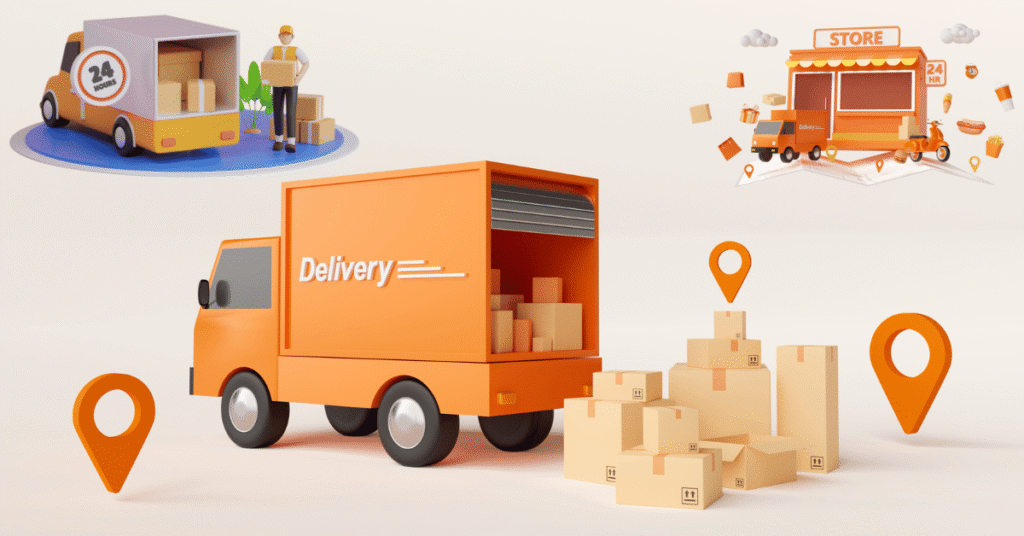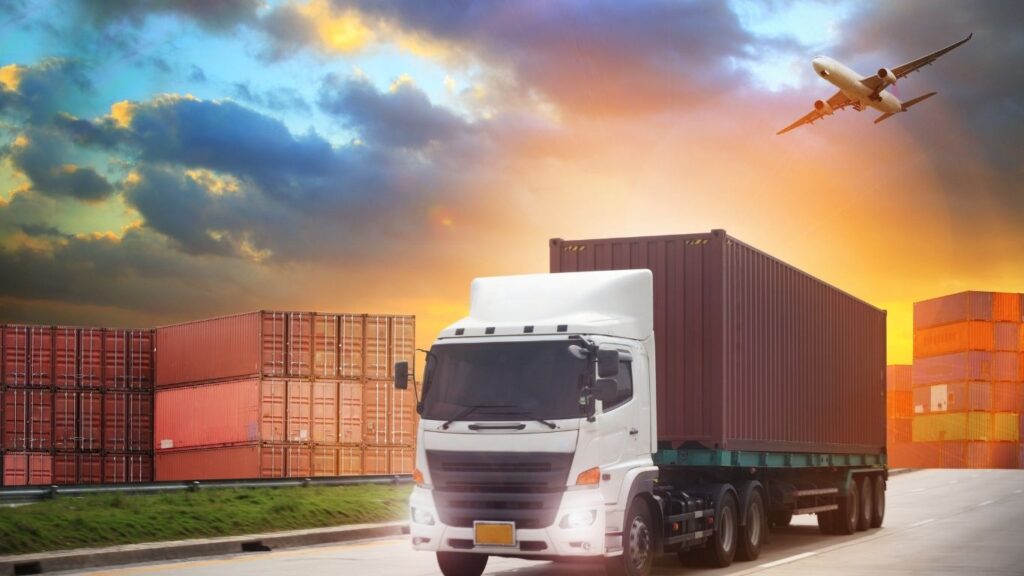Introduction
Amongst other goods and services that constitute an e-commerce business, shipping is among the most valuable. From a petty artisan forging handmade jewelry to a burgeoning label operating nine yards of international reach, shipping can seal the fate of an online store. Our guide in this field will be as exhaustive as possible, touching on e-commerce shipping solutions and optimizations as relevant in 2025: first from the perspective of customer satisfaction, then through higher efficiency, and ultimately in terms of added profitability.
What Is an E-Commerce Shipping Solution?
E-commerce shipping solutions are systems or services by which online retailers manage the delivery logistics for an item to their customers. The services included in these are:
E-commerce shipping services generally include managing domestic orders and overseas shipping.
Why Shipping Is Critical for E-Commerce Success
Different reasons could best explain the shipping solution’s importance:
- Customer Satisfaction: Their reliable delivery within time defines trust.
- Brand Image: The speed of delivery and the packaging influence perception.
- Operational Efficiency: Less complicated logistics will translate into profitable business.
- Global Reach: Scalable solutions make cross-border growth possible.
- Return Management: Easy, hassle-free returns convert well.
Types Of E-Commerce Shipping Solutions
There are plenty of shipping methods and solutions available:
a. In-House Shipping
Internal management is the least costly for the smaller businesses; however, this could be moderately scalable.
b. Third-Party Logistics (3PL)
These people do storage, packaging, and delivery. Some names you may have heard of are ShipBob and Fulfillment by Amazon (FBA).
c. Dropshipping
This form allows suppliers to do all the shipping, thus presenting less risk for an e-commerce owner.
d. Multi-carrier Shipping Software
This software lets you compare rates and services from different carriers using a single dashboard, saving you time and money.
Top Features to Look for in a Shipping Solution
Some e-commerce shipping platforms have a must-have feature for you to select. Some of the most wanted features include:
- Multi-carrier Integration
- Real-time Shipping Rates
- Order Tracking and Notifications
- Bulk Label Printing
- Return Management
- Customizable Packaging Options
- Automation Rules
- Analytics and Reporting
- The best solution can streamline the complete order fulfillment process with all these.
How to Choose the Right Shipping Partner
Let us take a look at the shipping partner selection process:
Evaluate your business needs
Order volume: domestic vs. international shipping;
Average product size and weight;
Compare the services offered by carriers:
- FedEx would be suitable for express delivery.
- For global shipping, DHL was a good option;
- USPS for cheap domestic rates.
Costs & Contracts
- Per shipment charge;
- subscription or service fees;
- hidden charges.
Customer Service
- The quicker your partner resolves issues, the less the risk becomes.
The Technology Role in Modern Shipping Solutions
Thanks to technological innovations, the shipping world has undergone significant changes in recent years.
- AI and ML for predictive delivery time and the optimal routes;
- APIs and Integrations-Allows seamless connection of e-commerce sites such as Shopify, WooCommerce, and Magento;
- Warehouse Automation of drones, robots, and smart bins is fast-forwarding work in fulfillment.
- Cloud-based dashboard logistics can be managed from this one portal anywhere, anytime.
The Shipping Challenges and Solutions
a. Cart abandonment arising out of high shipping charges.
Solution: Fix free shipping to be applicable on purchases beyond a certain minimum threshold, or real-time rate calculators.
b. Late delivery Solution: Predictive analytics with reliable carriers.
c. Merchandise damage
c. Solution: Investment in sturdy packaging with ecological considerations and instructions for handling.
d. Complexity in returns
Solution-Making returns labels easily while restoring inventories automatically.
Best Practices for E-Commerce Shipping in 2025
- Communicate Estimated Delivery Dates Clearly
- Provide Multiple Shipping Options
- Branded Packaging Enhances Experience
- Easy Order Tracking
- Automate Workflows Saves Time
- Regularly Audit Shipping costs and Performance.
Cost-Saving Strategies in E-Commerce Shipping
a. Negotiate Carrier Rates
You are better off negotiating a pricing structure that ensures folder visibility and inputs from your side over time with your carrier.
b. Use Flat Rate Boxes
Very useful when shipping products of the same size and weight.
c. Look for Regional Carriers:
Looking at smaller regional carriers to compare rates may show them even cheaper than national carriers, with special rates for specific regions.
d. Optimize Packaging:
Go with the smallest box feasible without compromising the safety of the product.
International Shipping: What You Need to Know
Going global in all practical senses? Consider the following:
- Customs Documentation
- Import Taxes and Duties
- Localized Delivery Partners
- Tracking and Visibility in Other Countries
- Language and Currency Localizations
International shipping solution providers will immensely help your businesses save from the heaps of complications concerning delivery issues and delays.
Returns Management and Reverse Logistics
The ability to return goods easily will give one a competitive edge.
Best Practices:
- Return labels should be placed within the shipping packages.
- Provide an elongated time frame for target returns.
- Use return automation software.
- Examine the return cause data so that stock may be adjusted accordingly.
- Reverse logistics across the spectrum is advantageous to ensure smooth operations and keep customers happy.
Case Studies: Successful Brands and Their Shipping Solutions
a. Glossier
Environmental considerations are paramount for packaging this beauty label, which collaborates with fulfillment centers in critical zones to shorten delivery lead times.
b. Gymshark
Uses multiple 3PLs for efficient scaling and to minimize problems arising from international shipping.
c. Allbirds
An advanced twist to sustainability with logistics having carbon-neutral delivery methods.
The fast becomes the proof of these brands: great shipping is a competitive instrument at a low cost.
Future Trends in E-Commerce Shipping
a. Green Shipping
Eco-conscious consumers want sustainable packaging and carbon offset options.
b. Same-day and One-hour Delivery
Faster deliveries are now practically regular in urban settings.
c. AI-Powered Fulfillment
In the following years, robots and AI will increasingly dominate fulfillment systems.
d. Aeromobiles and Autonomous Delivery Vehicles
Though still in testing, they look very promising for rural or hard-to-reach areas.
Conclusion
Shipping is no longer a mere backend function but one of the building blocks for customer experience and also the foundation pillar of the brand. E-commerce shipping solutions become such an edge that both competitive advantage and “satisfied” customers are tangible.
Regardless of whether you are a one-person band stepping up to an international corporation, the correct tools, strategic alliances, and processes will make your shipping strategy excel for years to come.



